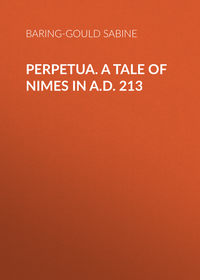 полная версия
полная версияThe Lives of the Saints, Volume 1 (of 16)
The Martyrologies may be divided into two series, the ancient and the modern. We need only concern ourselves with the Ancient Martyrologies.
The first to draw up a tolerably full Martyrology was Eusebius the historian, Bishop of Cæsarea in Palestine, and he did this at the request of the Emperor Constantine. In this Martyrology he noted all the martyrs of whom he had received an authentic account on the days of their suffering, with the names of the judges who sentenced them, the places where they suffered, and the nature of their sufferings. Eusebius wrote about a. d. 320, but there were collections of the sort already extant, as we may learn from the words of S. Cyprian already quoted, who in his instructions to his clergy ordered them to compile what was practically a Martyrology of the Carthaginian Church.
We have not got the Greek Martyrology of Eusebius, but we have the Latin version made by S. Jerome. Bede says of this, "Jerome was not the author, but the translator of this book; Eusebius is said to have been the author."
But even this Latin version has not come down to us in its original form. There are numerous copies, purporting to be the Martyrology of S. Jerome, still extant, but hardly two of them agree. The copies have been amplified. The occasion of S. Jerome making his translation was as follows. At the Council of Milan, held in 390, the presiding Bishop, Gregory of Cordova, read out daily on the eve, as usual, the lists of martyrs whose anniversary was to be celebrated on the morrow. As a good number of those present knew nothing of the martyrs thus commemorated, they wrote by the hands of Chromatius, Bishop of Aquileja, and Heliodorus, Bishop of Altino, to S. Jerome, then at Bethlehem, to request him to draw up for their use a Martyrology out of the collection made by Eusebius of Cæsarea.
To this S. Jerome answered by letter, stating that he had got the passions of the martyrs written by Eusebius, and that he would gladly execute what was asked of him. With this letter he sent the Martyrology, with the name of a martyr to every day in the year except the first of January.13 Unfortunately, as already said, we have not got a copy of the Martyrology unamended and unenlarged.
Next in importance to the Martyrology of Jerome comes the "Martyrologium Romanum Parvum," mentioned by S. Gregory the Great, who sent a copy of it to the Bishop of Aquileja. Ado, Bishop of Vienne, saw this; it was lent him for a few days, and he made a transcript with his own hand, as he tells us in the preface to his own Martyrology, and it served him as the basis for his work.
Baronius was unable to discover a copy, though he made inquiry for it, in the libraries of Italy; but it was discovered by Rosweydus, the learned Bollandist, and published by him in 1613.
S. Gregory the Great, in his 29th Epistle, says, "We have the names of nearly all the martyrs with their passions set down on their several days, collected into one volume, and we celebrate the Mass daily in their honour."
Cassiodorus, in his "Institution of Divine Lessons," says, "Read constantly the passions of the martyrs, which among other places you will find in the letter of S. Jerome to Chromatius and Heliodorus; they flourished over the whole earth, and provoked to imitation; you will be led thereby to the heavenly kingdom."
Next in importance to the Martyrology of Jerome and the little Roman Martyrology, comes that of the Venerable Bede. In the catalogue of his own works that he drew up, he says, "I wrote a Martyrology of the natal days of the holy martyrs, in which I took care to set down all I could find, not only on their several days, but I also gave the sort of conflict they underwent, and under what judge they conquered the world."
If we compare this Martyrology with the Acts of the Martyrs, we see at once that Bede took his account from them verbatim, merely condensing the narrative.
The Martyrology of Bede was written about 720; Drepanius Florus, a priest of Lyons, who died 860, added to it considerably, and most of the copies of Bede's Martyrology that we have are those enlarged by Florus.
The next martyrologist was Usuardus, monk of Saint-Germain-des-Prés, who died in 876. He wrote his Martyrology at the request of Charles the Bald, who was dissatisfied with the Martyrologies of Jerome and of Bede because they were too short in their narratives, and also because several days in the calendar were left blank. This account, which Usuardus gives in his preface, does not tally with the words of the epistle attributed to S. Jerome that precedes his Martyrology; and leads to the suspicion that this portion of the epistle, at least, is not genuine. Usuardus certainly used the Hieronyman Martyrology as the basis of his work, and this has caused his work to be designated the larger Hieronyman Martyrology. This work of Usuardus was so full, that it displaced the earlier Martyrologies in a great many churches. The best edition of the Martyrology of Usuardus is that of Solerius, Antwerp, 1714-1717.
Usuardus was followed by Wandelbert, monk of Prum, who died in 870. Wandelbert followed the Martyrologies of SS. Jerome and Bede, as amplified by Florus, and wrote the notices of the martyrs in hexameter Latin verses. This monument of patience is composed of about 360 metrical pieces, of which each contains the life of the Saint commemorated on the day. To these, which form the bulk of the work, are prefixed others of less importance, prefaces, dedicatory epistles to Lothair, preliminary discourses on the importance of the Martyrology, on the knowledge of times and seasons, months and days, etc. Although Wandelbert wrote for the most part in hexameters, he abandoned them occasionally for lyric metres, which he managed with less facility. D'Achéry published this Martyrology in his "Spicilegium," but the edition is a bad one.
The next martyrologist is Ado, Bishop of Vienne, who has been already mentioned in connection with the "Martyrologium Parvum." Ado was born about the year 800, and died in 875. In his preface, Ado says: "For this work of noting on their proper days the nativities of the Saints, which are generally found confusedly in calendars, I have made use of a venerable and very ancient Martyrology, at Aquileja, sent to a certain holy bishop by the Roman Pontiff, and this was lent me, when at Ravenna, for a few days by a certain religious brother. This I diligently copied, and thought to place it at the head of my work. I have, however, inserted the passions of the Saints somewhat longer in this Martyrology, for the use of the infirm brothers, and those less able to get at books, that they may be able to read out of a little book a compendium to the praise of God and the memory of the martyrs, instead of overhauling a host of big volumes with much labour." The best edition of Ado's Martyrology is that by Geo. Rhodigini, published at Rome, 1740.
There have been many later Martyrologies, but these are of far inferior importance, and need not be here enumerated. In the East, the Greeks had anciently their collections. That of Eusebius probably formed the basis of later Menologies. In the Horology are contained calendars of the Saints for every day with prayers; this portion of the Horology is called the Menology.
The Menology is divided into months, and contains the lives of the Saints, in abridgment, for each day, or the simple commemoration of those whose acts are extant. The Menology of the Greeks is, therefore, much the same as the Latin Martyrology, and there are almost as many Menologies as there are Martyrologies. The principal is that of the Emperor Basil II. (d. 1025), published by Ughelli in his "Italia Sacra." The larger Menologies are entitled "Synaxaria," because they were read in the churches on days of assembly. These lives are very long, and the Menology contains the substance in a condensed form.
The modern Roman Martyrology was drawn up by order of Pope Gregory XIII., who appointed for the purpose eight commissaries, amongst whom was Baronius. It leaves much to be desired, as it bristles with inaccuracies. A fresh edition was issued with some corrections by Benedict XIV. It demands a careful revision. Many of its inaccuracies have been pointed out in the course of this work.
It is impossible to dismiss the subject of Martyrologies without a word on the "Acta Sanctorum" of the Bollandists. This magnificent collection of Lives of the Saints is arranged on the principle of the Synaxarium, or Martyrology – that is to say, the Saints are not given in their chronological order, but as they appear in the calendar.
Heribert Resweidus, of Utrecht, was a learned Jesuit father, born in 1563, who died 1629. In 1607 he published the "Fasti sanctorum quorum vitæ manuscriptæ in Belgio," a book containing the plan of a vast work on the lives of all the Saints, which he desired to undertake. In 1613 he published "Notes on the old Roman Martyrology," which he was the first to discover. In 1615 he brought out the "Lives of the Hermits," and in 1619 another work on the "Eremites of Palestine and Egypt." In 1626 he published the "Lives of the Virgin Saints." He died before the great work for which he had collected, and to which he had devoted his time and thoughts, was begun. But the project was not allowed to drop. It was taken [Pg xxviii] up by John Bollandus, another Jesuit; with him were associated two other fathers of the same order, Henschenius and Papebrock, and in 1643 appeared the January volumes, two in number. In 1648 the three volumes of the February Saints issued from the press. Bollandus died in 1665, and the March volumes, three in number, edited by Henschenius and Papebrock, appeared in 1668. As the work proceeded, material came in in abundance, and the work grew under their hands. May was represented by seven volumes; so also June, July, and August. The compilation is not yet complete. At present, this huge work consists of about sixty folio volumes, which bring the student down to within three days of the end of the month of October; but a large store of material is being utilized in order to complete that month forthwith, and further stores have been accumulated towards the Lives of the Saints for November and December, about 4000 of such biographies being still to be actually written. Moreover, the earlier volumes are very incomplete, and at least the months of January to April need rewriting.
The principle on which the Bollandists have worked is an excellent one. They have not themselves written the lives of the Saints, but they publish every scrap of record, and all the ancient acts and lives of the Saints that are extant. The work is a storehouse of historical materials. To these materials the editors prefix an introductory essay on the value and genuineness of the material, and on the chronology of the Saint's life. They have done their work conscientiously and well. Only occasionally have they omitted acts or portions of lives which they have regarded as mythical or unedifying. These omissions are to be regretted, as they would have been instructive.
Another valuable repository of the lives of Saints is Mabillon's "Collection of the Acts of the Saints of the Order of S. Benedict," in nine volumes, published 1668-1701. The arrangement in this collection is by centuries. Theodoric Ruinart, in 1689, published the Acts of the Martyrs, but not a complete series; he selected only those which he regarded as genuine.
With regard to England there is a Martyrology of Christ Church, Canterbury, written in the thirteenth century, and now in the British Museum (Arundell MSS., No. 68); also a Martyrology written between 1220 and 1224, from the south-west of England; this also is in the British Museum (MSS. Reg. 2, A. xiii.). A Saxon Martyrology, incomplete, is among the Harleian MSS. (2785) in the same museum. It dates from the fourteenth century. There is a transcript among the Sloane MSS. (4938), of a Martyrology of North English origin, but this also is incomplete. There are others, later, of less value. The most interesting is "The Martiloge in Englysshe, after the use of the chirche of Salisbury," printed by Wynkyn de Worde in 1526, reissued by the "Henry Bradshaw Society" in 1893. To these Martyrologies must be added the "Legenda" of John of Tynemouth, a. d. 1350; that of Capgrave, a. d. 1450, his "Nova Legenda," printed in 1516; Whitford's "Martyrology," 1526; Wilson's "Martyrologue," 1st edition, 1608, 2nd edition, 1640; and Bishop Challoner's "Memorial of Ancient British Piety," 1761. Recently the Rev. Richard Stanton, Priest of the Oratory, London, has issued an invaluable "Martyrology of England and Wales," 1887.
Scottish Kalendars have been reprinted and commented on, and brief lives of the Saints given by the late Bishop Forbes of Brechin, in "Kalendars of Scottish Saints," Edinburgh, 1872.
Unhappily little is known of the Welsh and Cornish and some local English Saints, but it is my purpose to add such information as can be gathered concerning them.
S. BARING-GOULD.January 1897.January 1.
The Feast of the Circumcision of our Lord Jesus Christ
S. Gaspar, one of the Magi.
S. Concord, P. M., at Spoleto, in Umbria, circ. a.d. 175.
SS. Elvan, B., and Mydwyn, in England, circ. a.d. 198.
S. Martina, V. M., at Rome, a.d. 235.
S. Paracodius, B. of Vienne, a.d. 239.
S. Severus, M., at Ravenna, a.d. 304.
S. Telemachus, M., at Rome, a.d. 404.
S. Fulgentius, B. C. of Ruspe, in N. Africa, a.d. 533.
S. Mochua, or Cuan, Ab. in Ireland, 6th cent.
S. Mochua, or Cronan, Ab. of Balla, in Ireland, 7th cent.
S. Eugendus, Ab. of Condate, in the Jura, a.d. 581.
S. Fanchea, or Fain, V. Abss., of Rosairthir, in Ireland, 6th cent.
S. Clare, Ab. of Vienne, circ. a.d. 660.
S. William, Ab. S. Benignus, at Dijon, a.d. 1031.
S. Odilo, Ab. Cluny, a.d. 1049.
THE CIRCUMCISION OF OUR LORDThis festival is celebrated by the Church in order to commemorate the obedience of our Lord in fulfilling all righteousness, which is one branch of the meritorious cause of our redemption, and by that means abrogating the severe injunctions of the Mosaic law, and placing us under the grace of the Gospel.
God gave to Abraham the command to circumcise all male children on the eighth day after birth, and this rite was to be the seal of covenant with Him, a token that, through shedding of the blood of One to come, remission of the original sin inherited from Adam could alone be obtained. It was also to point out that the Jews were cut off, and separate, from the other nations. By circumcision, a Jew belonged to the covenant, was consecrated to the service of God, and undertook to believe the truths revealed by Him to His elect people, and to hold the commandments to which He required obedience. Thus, this outward sign admitted him to true worship of God, true knowledge of God, and true obedience to God's moral law. Circumcision looked forward to Christ, who, by His blood, remits sin. Consequently, as a rite pointing to Him who was to come, it is abolished, and its place is taken by baptism, which also is a sign of covenant with God, admitting to true worship, true knowledge, and true obedience. But baptism is more than a covenant, and therefore more than was circumcision. It is a Sacrament; that is, a channel of grace. By baptism, supernatural power, or grace, is given to the child, whereby it obtains that which by nature it could not have. Circumcision admitted to covenant, but conferred no grace. Baptism admits to covenant, and confers grace. By circumcision, a child was made a member of God's own peculiar people. By baptism, the same is done; but God's own people is now not one nation, but the whole Catholic Church. Christ underwent circumcision, not because He had inherited the sin of Adam, but because He came to fulfil all righteousness, to accomplish the law, and for the letter to give the spirit.
It was, probably, the extravagances committed among the heathen at the kalends of January, upon which this day fell, that hindered the Church for some ages from proposing it as an universal set festival. The writings of the Fathers are full of invectives against the idolatrous profanations of this day, which concluded the riotous feasts in honour of Saturn, and was dedicated to Janus and Strena, or Strenua, a goddess supposed to preside over those presents which were sent to, and received from, one another on the first day of the year, and which were called after her, strenæ; a name which is still preserved in the étrennes, or gifts, which it is customary in France to make on New Year's Day.
But, when the danger of the heathen abuses was removed, by the establishment of Christianity in the Roman empire, this festival began to be observed; and the mystery of our Blessed Lord's Circumcision is explained in several ancient homilies of the fifth century. It was, however, spoken of in earlier times as the Octave of the Nativity, and the earliest mention of it as the Circumcision is towards the end of the eleventh century, shortly before the time of S. Bernard, who also has a sermon upon it. In the Ambrosian Missal, used at Milan, the services of the day contain special cautions against idolatry. In a Gallican Lectionary, which is supposed to be as old as the seventh century, are special lessons "In Circumcisione Domini." Ivo, of Chartres, in 1090, speaks of the observance of this day in the French Church. The Greek Church also has a special commemoration of the Circumcision.
S. CONCORD, P. M(about 175.)[S. Concord is mentioned in all the Latin Martyrologies. His festival is celebrated at Bispal, in the diocese of Gerona, in Spain, where his body is said to be preserved, on the 2nd Jan. His translation is commemorated on the 4th July. The following is an abridgment of his genuine Acts.]
In the reign of the Emperor Marcus Antoninus, there raged a violent persecution in the city of Rome. At that time there dwelt in Rome a sub-deacon, named Concordius, whose father was priest of S. Pastor's, Cordianus by name. Concord was brought up by his father in the fear of God, and in the study of Holy Scripture, and he was consecrated sub-deacon by S. Pius, Bishop of Rome. Concord and his father fasted and prayed, and served the Lord instantly in the person of His poor. When the persecution waxed sore, said Concord to his father, "My lord, send me away, I pray thee, to S. Eutyches, that I may dwell with him a few days, until this tyranny be overpast." His father answered, "My son, it is better to stay here that we may be crowned." But Concord said, "Let me go, that I may be crowned where Christ shall bid me be crowned." Then his father sent him away, and Eutyches received him with great joy. With him Concord dwelt for a season, fervent in prayer. And many sick came to them, and were healed in the name of Jesus Christ.
Then, hearing the fame of them, Torquatus, governor of Umbria, residing at Spoleto, sent and had Concord brought before him. To him he said, "What is thy name?" He answered, "I am a Christian." Then, said the Governor, "I asked concerning thee, and not about thy Christ." S. Concord replied, "I have said that I am a Christian, and Christ I confess." The Governor ordered: "Sacrifice to the immortal gods, and I will be to thee a father, and will obtain for thee favour at the hands of the Emperor, and he will exalt thee to be priest of the gods." S. Concord said, "Harken unto me, and sacrifice to the Lord Jesus Christ, and thou shalt escape eternal misery." Then the governor ordered him to be beaten with clubs, and to be cast into prison.
Then, at night, there came to him the blessed Eutyches, with S. Anthymius, the bishop; for Anthymius was a friend of the governor; and he obtained permission of Torquatus to take Concord home with him for a few days. And during these days he ordained him priest, and they watched together in prayer.
And after a time, the governor sent and brought him before him once more and said to him, "What hast thou decided on for thy salvation?" Then Concord said, "Christ is my salvation, to whom daily I offer the sacrifice of praise." Then he was condemned to be hung upon the little horse; and, with a glad countenance, he cried, "Glory be to Thee, Lord Jesus Christ!"
After this torment he was cast into prison, with irons on his hands and neck. And blessed Concord began to sing praise to God in his dungeon, and he said, "Glory be to God on high, and in earth peace to men of good will." Then, that same night, the angel of the Lord stood by him, and said, "Fear not to play the man, I shall be with thee."
And when three days had passed, the governor sent two of his officers, at night, to him with a small image of Jupiter. And they said, "Hear what the governor has ordered; sacrifice to Jupiter or lose thy head." Then the blessed Concord spat in the face of the idol, and said, "Glory be to Thee, Lord Jesus Christ." Then one of the officers smote off his head in the prison. Afterwards, two clerks and certain religious men carried away his body, and buried it not far from the city of Spoleto, where many waters flow forth.
SS. ELVAN AND MYDWYN(about 198.)[Mentioned in English Martyrologies, and by Ferrarius in his General Catalogue of the Saints. The evidence for these Saints is purely traditional; the first written record of them was by Gildas, a. d. 560, but his account is lost. It is referred to by Matthew of Westminster.]
Saint Elvan of Avalon, or Glastonbury, was brought up in that school erroneously said to have been founded by S. Joseph of Arimathea. He vehemently preached the truth before Lucius, a British king, and was mightily assisted by S. Mydwyn of Wales (Meduinus), a man of great learning. Lucius despatched Elvan and Mydwyn to Rome, on an embassy to Pope Eleutherius, in 179, who consecrated Elvan bishop, and appointed Mydwyn teacher. He gave them, as companions, two Roman clerks, Faganus and Deruvianus; or, according to some, Fugatius and Damianus. They returned with these to King Lucius, who was obedient to the word of God, and received baptism along with many of his princes and nobles. Elvan became the second archbishop of London. He and Mydwyn were buried at Avalon. S. Patrick is said to have found there an ancient account of the acts of the Apostles, and of Fugatius and Damianus, written by the hand of S. Mydwyn. Matthew of Westminster gives the following account of the conversion of Lucius, under the year 185: – "About the same time, Lucius, king of the Britons, directed letters to Eleutherius, entreating him that he would make him a Christian. And the blessed pontiff, having ascertained the devotion of the king, sent to him some religious teachers; namely, Faganus and Deruvianus, to convert the king to Christ, and wash him in the holy font. And when that had been done, then the different nations ran to baptism, following the example of the king, so that in a short time there were no infidels found in the island."
There is a considerable amount of exaggeration in this account of Matthew of Westminster, which must not be passed over. Lucius is known in the Welsh triads by the name of Lleurwg, or Lleufer Mawr, which means "The great Luminary," and this has been Latinized into Lucius, from Lux, light. He was king of a portion of South Wales only. The Welsh authorities make no mention of the alleged mission to Rome, though, that such a mission should have been sent, is extremely probable. Some accounts say that Medwy and Elfan were Britons, and that Dyfan and Ffagan (Deruvianus and Faganus) were Roman priests. But both these names are British, consequently we may conjecture that they were of British origin, but resided then at Rome.
Four churches near Llandaf bore the names of Lleurwg (Lucius), Dyfan, Ffagan, and Medwy, which confirms the belief in the existence of these Saints, and indicates the scene of their labours. Matthew of Westminster adds: – "A.D. 185. The blessed priests, Faganus and Deruvianus, returned to Rome, and easily prevailed on the most blessed Pope that all that they had done should be confirmed. And when it had been, then the before-mentioned teachers returned to Britain, with a great many more, by whose teaching the nation of the Britons was soon founded in the faith of Christ, and became eminent as a Christian people. And their names and actions are found in the book that Gildas the historian wrote, concerning the victory of Aurelius Ambrosius."









